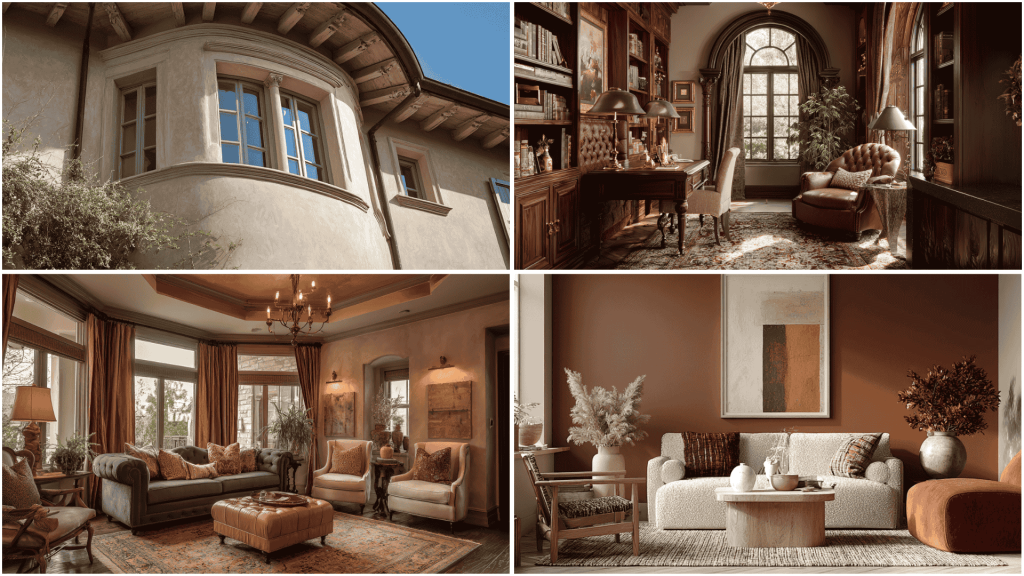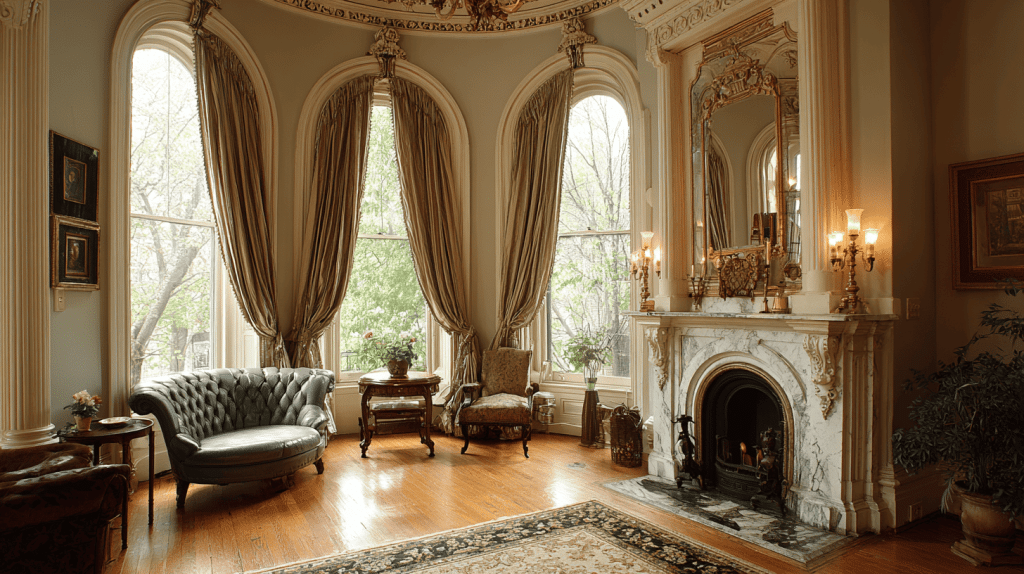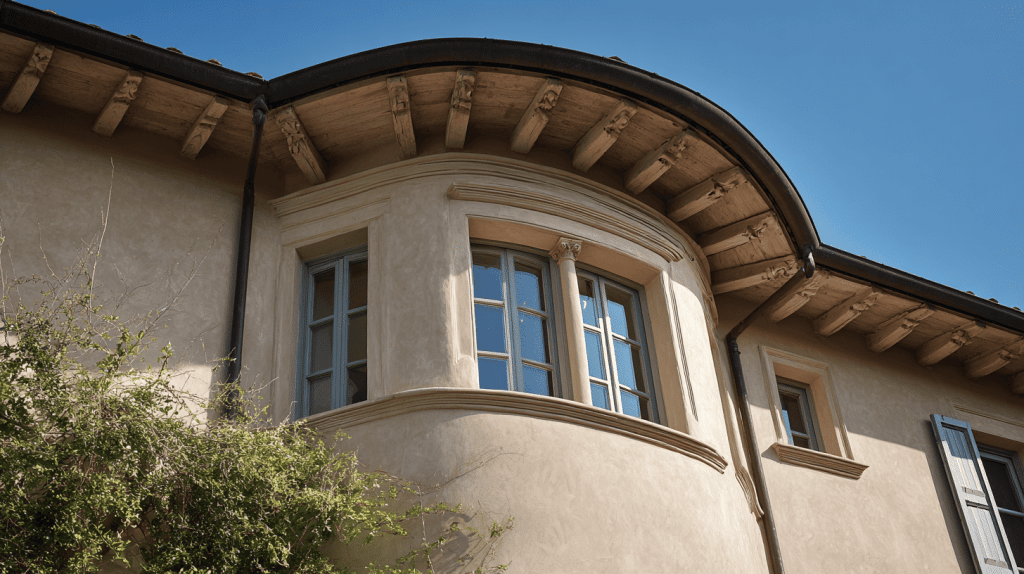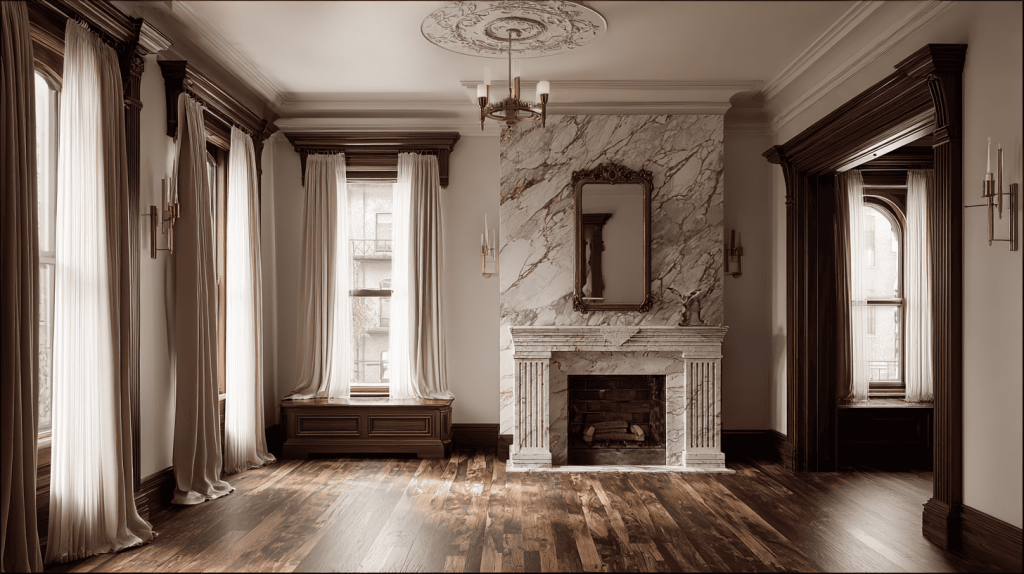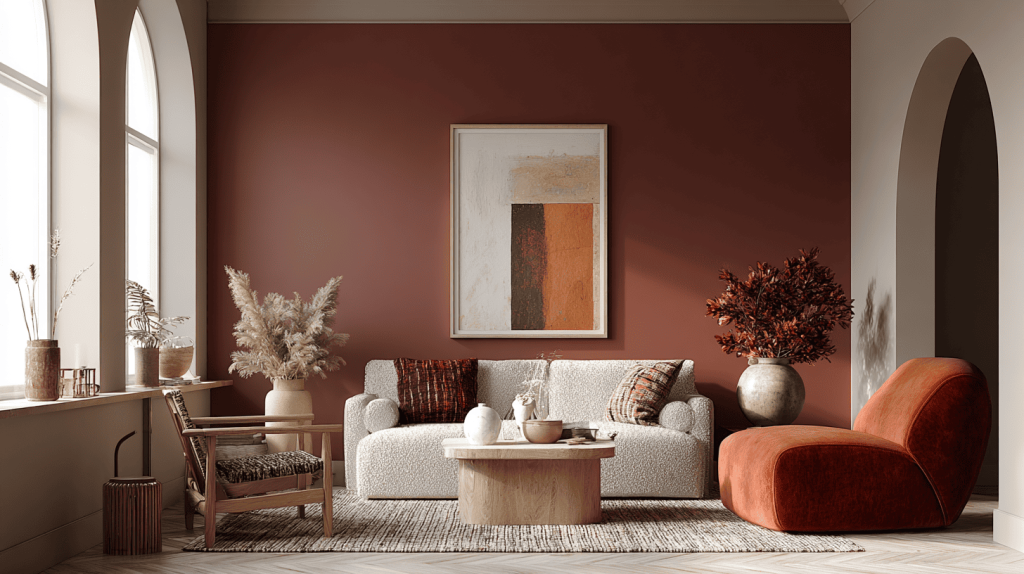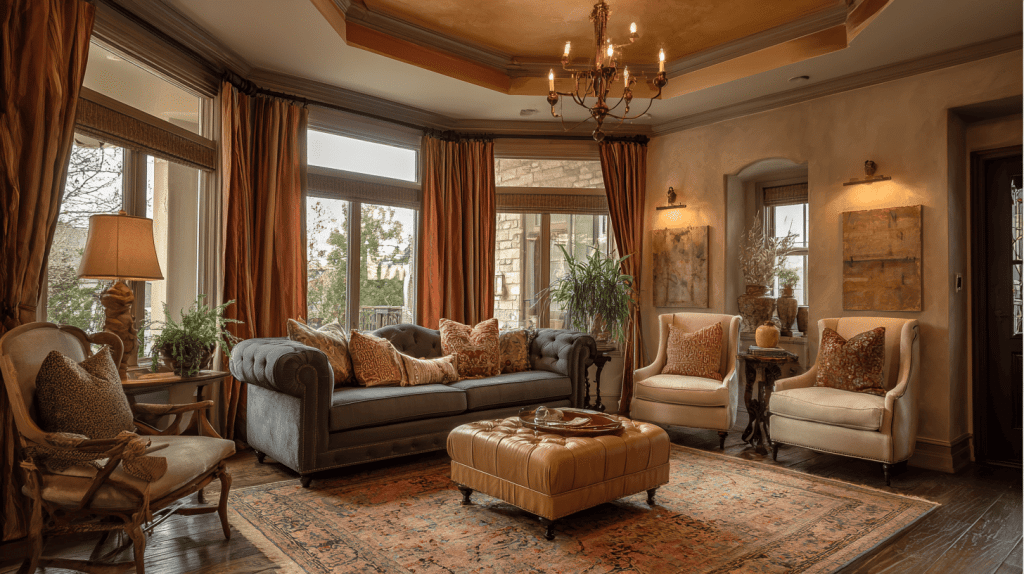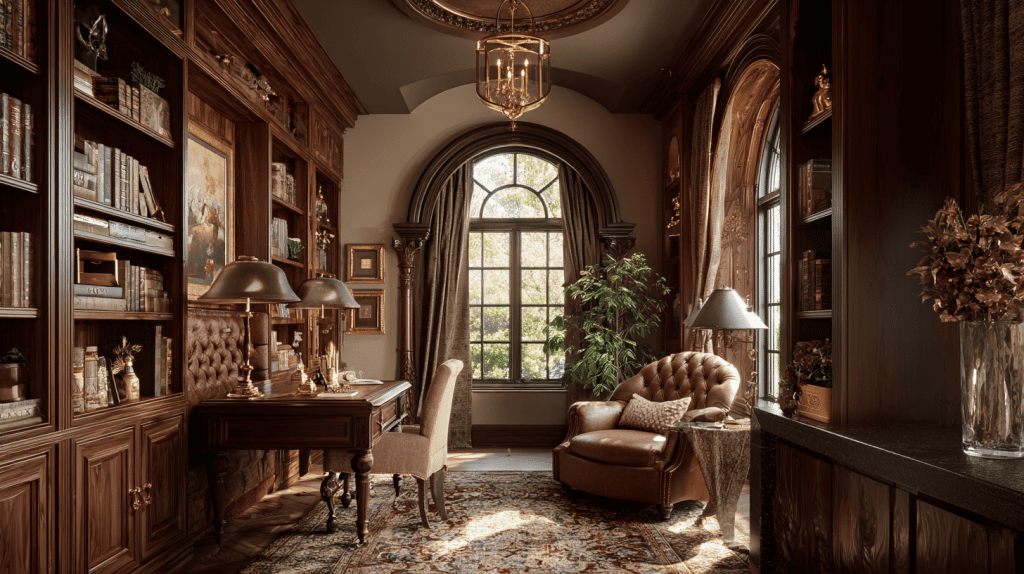Have you ever walked into a room and felt instantly transported to a grand Italian villa?
That’s the magic of Italianate house interiors!
These stunning spaces blend old-world charm with timeless grace, creating homes that feel both luxurious and welcoming.
Picture soaring ceilings, beautiful arched windows, and rich details that tell a story in every corner.
If you’re dreaming of a complete renovation or want to add some Italian-inspired touches to your current space, these interiors offer endless inspiration.
From ornate moldings to warm color palettes, every element works together to create something truly special.
Step inside and uncover how Italianate style can alter your home into a masterpiece!
What is an Italianate House Interior?
Italianate interior style began with inspiration from Italian Renaissance villas and was later adapted for Victorian homes in the 19th century.
It is known for its graceful details, tall proportions, and love for craftsmanship.
You could think of high ceilings, arched windows, ornate trim, and timeless but liveable rooms.
While the style carries a sense of formality, it is never cold. It feels warm and full of character.
Many people still love it today because it blends old-world charm with timeless beauty, offering a rich, layered look that feels both classic and inviting.
A Short History of Italianate House Interiors
The Italianate style first appeared in early 19th century England as part of a growing interest in classical European architecture.
Inspired by the charm of Italian villas, it quickly gained popularity for its romantic and decorative appeal.
By the mid-1800s, the style made its way to the United States during the Victorian era.
It was used in both city townhouses and country homes, making it widely loved. These interiors were designed to feel refined yet still comfortable and personal.
With their detailed trim and warm atmosphere, Italianate homes offered a perfect mix of beauty and liveability.
Italianate House Interior Characteristics
Italianate homes have a distinct architectural charm that naturally shapes their interiors, with drama, grace, and detail designed into buildings that create spaces that feel both grand and inviting.
Here are some of the key features that define the Italianate style and influence its interior design:
| FEATURE | DESCRIPTION | DESIGN IMPACT |
|---|---|---|
| Tall, Narrow Windows with Curved Tops | Let in abundant natural light and elongate the visual height of rooms. | Enhance elegance and verticality; often framed with detailed trim or shutters. |
| Overhanging Eaves with Ornate Brackets | Exterior brackets reflect interior ornamentation in ceiling and furniture details. | Create continuity between exterior and interior; emphasize craftsmanship. |
| High Ceilings, Cornices, Heavy Moulding | Large crown mouldings, ceiling medallions, and decorative trim define formal rooms. | Add depth, richness, and architectural drama. |
| Grand Entryways with Double Doors | Often feature arched openings or spacious foyers. | Set a dramatic and welcoming tone; highlight symmetry and grandeur. |
Italianate interiors blend detail, charm, and beauty with tall ceilings, ornate trim, and graceful windows that create a style feeling both grand and inviting.
How to Design an Italianate House Interior
When designing an Italianate house interior, it’s not just about recreating history; it’s about capturing the soul of it and creating a space that feels rich and layered but also welcoming.
The right materials, colors, and textiles can make all the difference; here are a few key elements that contribute to the styling.
1. Natural Materials That Define the Style
Natural materials like rich woods (walnut, mahogany, oak), marble accents, and plaster walls add warmth, texture, and history, making the space feel grounded and complete.
These timeless materials help anchor the room with natural presence, while brass, wrought iron, or stone accents add refined touches.
2. The Italianate Colour Palette
Start with earthy tones like terracotta, olive green, and soft cream to lay a warm foundation, then add muted jewel tones like navy, burgundy, or gold through fabrics and accent pieces for richness.
Balance these deeper colors with soft neutrals like sand and ivory to calm the space and highlight architectural details
3. Comfort and Functionality in Italianate House Interiors
Italianate homes should feel comfortable despite their formal appearance, arrange rooms for conversation and connection, keeping things close and cozy rather than spread out or too formal.
Soften the space with layered rugs, heavy drapes, and warm lighting using a mix of lamps, wall lights, and chandeliers for a soft glow.
4. Design Motifs and Textiles
Classic patterns, such as damask, brocade, and florals, can be added through pillows, curtains, or wallpapers to bring immense charm and texture. Meanwhile, trims, fringe, and tassels add detailed layers.
Choose rich fabrics like velvet, silk, and linen that feel luxurious and complement the overall aesthetic with warmth and refinement.
5. Decorative Architecture as a Design Feature
Enhance existing architectural details, such as arches, tall baseboards, or crown moulding, by making them stand out. Consider adding ceiling roses, wall panels, or decorative door frames to complement the structure and style.
These simple features help frame the space and remind us of the care and craftsmanship that define this timeless look.
How Italianate House Interiors Work
Italianate interiors are all about thoughtful beauty. They balance beauty and comfort, blending thoughtful details with an open, airy feel.
Nothing feels random. Every element serves a purpose.
This style invites you to slow down and appreciate the richness of the room, from floor to ceiling.
Grace with comfort – spaces look refined but feel warm and inviting
Ornamentation with purpose – mouldings, arches, and trims add meaning, not just decoration
Height and proportion – tall windows and high ceilings give rooms a graceful, airy feel
Layered Textures and History – Old Meets New Through Wood, Stone, Textiles, and Antiques
Final Tips for Bringing Home the Italianate Feel
Bringing the Italianate style into your home doesn’t have to be complicated; it’s more about intention than perfection, focusing on simplicity, thoughtfulness, and warmth.
Here are some tips to guide you:
- You should incorporate architectural elements like mouldings, ceiling roses, and arches as they add character and depth to your house interior.
- You can always mix old and new interior styles to create your perfect interior, which will personalize your space with warmth and style.
- Remember to keep your colors and lighting soft and consistent as it helps the space feel calm and connected.
- Also, you need not overdo it—let the charm come through naturally to prevent chaos in your interior while keeping it nice and cozy.
The beauty of Italianate design lies in its ability to evoke both grandeur and warmth, creating spaces that tell a story while serving your daily life.
With these thoughtful touches, your home will capture the timeless grace that makes this style so enduringly beautiful.
Wrapping it Up
Creating the perfect Italianate house interior is all about striking the perfect balance between grace and comfort.
You don’t need to be a professional designer or spend a fortune to bring this timeless style into your home.
Start with rich materials, warm colors, and thoughtful details that speak to you.
Remember, it’s not about copying a museum, it’s about creating a space that feels both refined and welcoming.
If you add decorative moldings, choose earthy paint colors, or incorporate vintage textiles, each element should feel intentional and personal.
Alter your home into an Italian masterpiece, one thoughtful detail at a time!
What’s your favorite Italianate design element?
Share your thoughts in the comments below!

